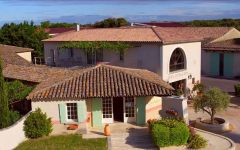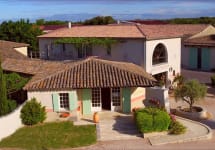Alain Jaume Chateauneuf-du-Pape Vieux Terron 2012




Product Details
Your Rating
Somm Note
Winemaker Notes
The palate reveals clearly the aromatic complexity: spices and black fruit are boasted with soft tannins. The finish is long with aromatic hints of liquorice and pepper. Red raspberries, star anise and hints of cinnamon.
It will accompany game, red meat or meat in sauce and strong cheeses.
Other Vintages
2019-
Robert
Parker -
Jeb
Dunnuck
-
Robert
Parker -
Jeb
Dunnuck
-
Wine
Enthusiast -
Robert
Parker -
Jeb
Dunnuck
-
Robert
Parker -
Jeb
Dunnuck





In 1979, Alain and Odile Jaume carried on the family tradition with the creation of the Grand Veneur. At the beginning, the vineyard extended over 22 acres. Over time, the vineyard grew to today's figure of nearly 170 acres spread in the Chateauneuf du Pape, Lirac, Cotes de Rhone Villages "Les Champauvins", and Cotes du Rhone areas.
In 2003, a new estate of 50 acres was acquired : the "Clos de Sixte" Appellation d'Origine Contrôlée Lirac. This appellation located a few kilometres from Chateauneuf du Pape (in front of it when you cross the Rhone river), is one of the fifteen Crus of the Rhône Valley. However, the soils are unique and they look like the plateaux of Chateauneuf du Pape with sandy-clay earth and the famous rocks that cover the soil. For many years, Lirac had less reputation than Chateauneuf du Pape, but it is potentially the coming "Outsider" of the Rhone Valley.
Over the years, the family has grown, too. Today, Sébastien and Christophe are gradually taking charge of the management of the estate. Sharing the family know-how, they have to put to maximum advantage their knowledge in wine-growing and wine-tasting.

With bold fruit flavors and accents of sweet spice, Grenache, Syrah and Mourvèdre form the base of the classic Rhône Red Blend, while Carignan, Cinsault and Counoise often come in to play. Though they originated from France’s southern Rhône Valley, with some creative interpretation, Rhône blends have also become popular in other countries. Somm Secret—Putting their own local spin on the Rhône Red Blend, those from Priorat often include Merlot and Cabernet Sauvignon. In California, it is not uncommon to see Petite Sirah make an appearance.

Famous for its full-bodied, seductive and spicy reds with flavor and aroma characteristics reminiscent of black cherry, baked raspberry, garrigue, olive tapenade, lavender and baking spice, Châteauneuf-du-Pape is the leading sub-appellation of the southern Rhône River Valley. Large pebbles resembling river rocks, called "galets" in French, dominate most of the terrain. The stones hold heat and reflect it back up to the low-lying gobelet-trained vines. Though the galets are typical, they are not prominent in every vineyard. Chateau Rayas is the most obvious deviation with very sandy soil.
According to law, eighteen grape varieties are allowed in Châteauneuf-du-Pape and most wines are blends of some mix of these. For reds, Grenache is the star player with Mourvedre and Syrah coming typically second. Others used include Cinsault, Counoise and occasionally Muscardin, Vaccarèse, Picquepoul Noir and Terret Noir.
Only about 6-7% of wine from Châteauneuf-du-Pape is white wine. Blends and single-varietal bottlings are typically based on the soft and floral Grenache Blanc but Clairette, Bourboulenc and Roussanne are grown with some significance.
The wine of Chateauneuf-du-Pape takes its name from the relocation of the papal court to Avignon. The lore says that after moving in 1309, Pope Clément V (after whom Chateau Pape-Clément in Pessac-Léognan is named) ordered that vines were planted. But it was actually his successor, John XXII, who established the vineyards. The name however, Chateauneuf-du-Pape, translated as "the pope's new castle," didn’t really stick until the 19th century.
